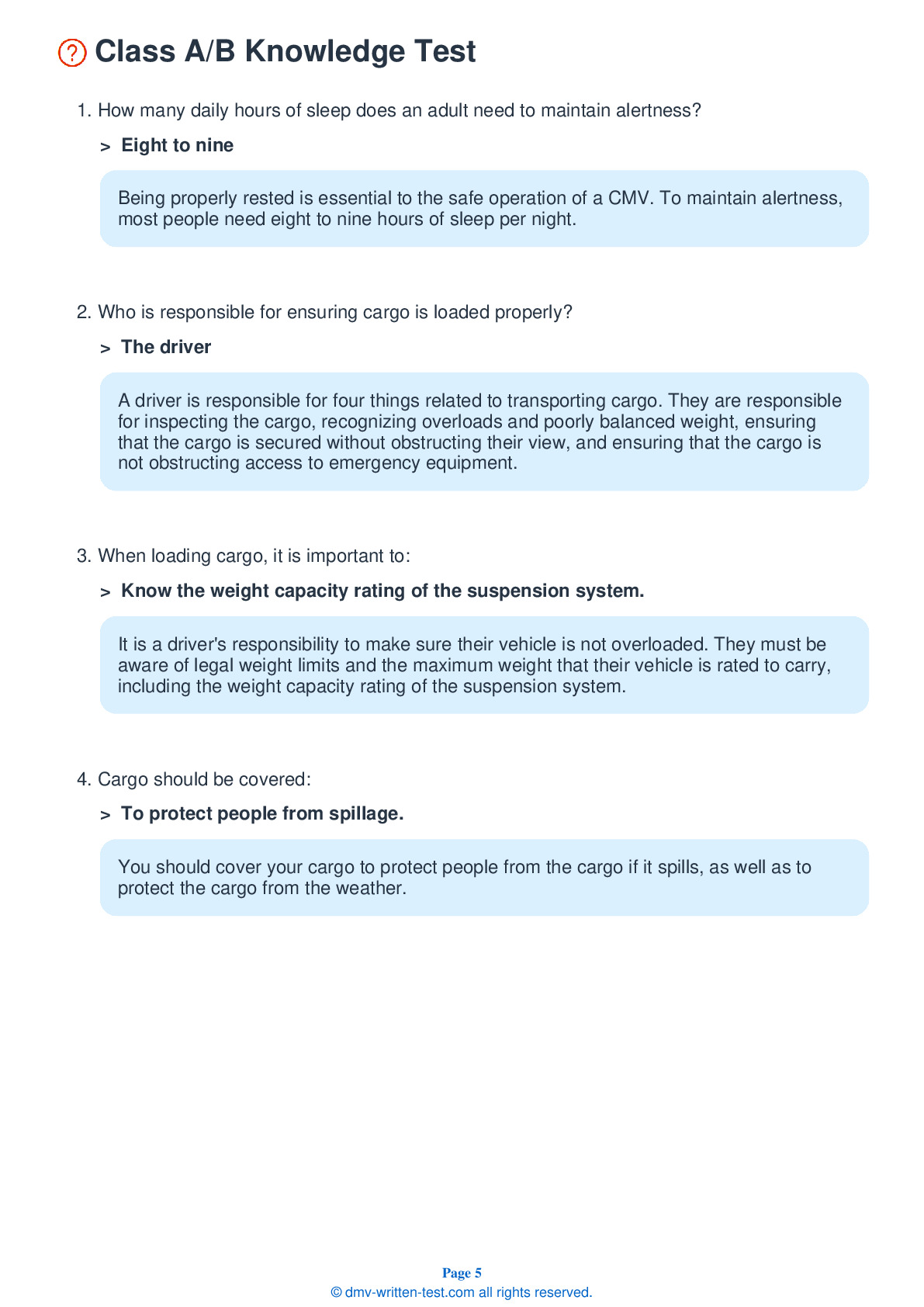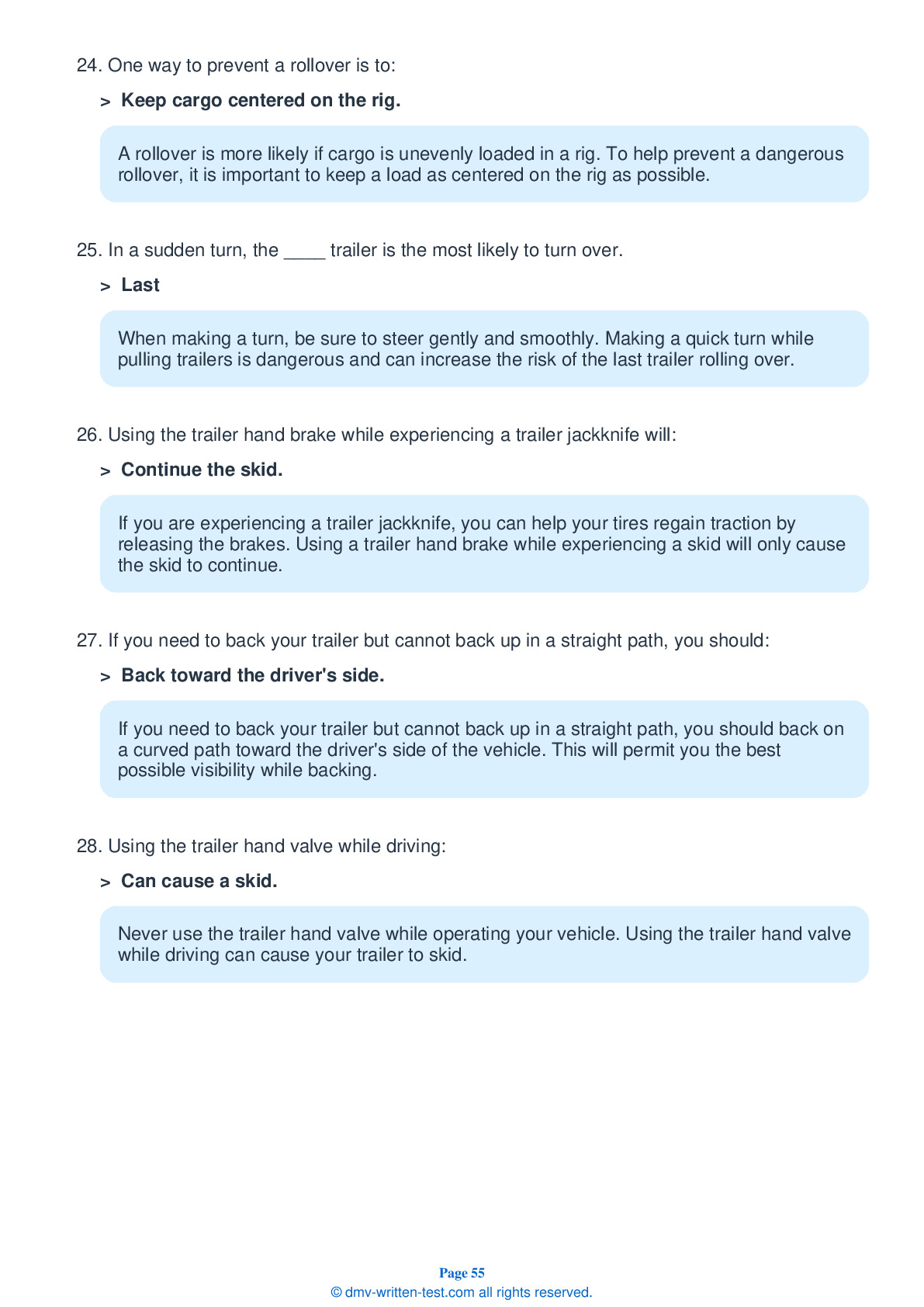Combination
All applicants who are applying for a Class A CDL should be prepared to take the Combination test. This test covers information found in Section 6 of the Nevada Commercial Driver License Manual. Section 6 provides the information needed to safely operate tractor-trailers, doubles, triples, and straight trucks with trailers. The test is made up of 20 multiple-choice questions, and applicants will need to correctly answer a minimum of 16 questions to pass. The Combination test is not a replacement for the Double/Triple endorsement test.
Number of Question
Passing Score
8. When coupling a trailer, you should:
Explanation
When coupling air brake hoses, you should make sure the proper pairs of gland hands are connected. They are sometimes color-coded to help drivers avoid mistakes. Typically, blue is used for service lines and red is used for emergency lines.
9. If a trailer is too high:
Explanation
Before coupling together a tractor and a trailer, you should make sure the trailer is at the proper height. If the trailer is too low, the trailer nose may be damaged. If the trailer is too high, it may not be able to couple correctly.
10. If a trailer begins to jackknife, the driver:
Explanation
If a trailer begins to jackknife, you should release the brakes and allow the trailer wheels to regain traction with the road. Do not apply the trailer hand brake to attempt to straighten out the rig because the application of brakes is what caused the wheels to lock in the first place.
11. Which of the following types of vehicles is most prone to the “crack-the-whip" effect?
Explanation
Double and triple combinations are the most vulnerable to turning over as a result of the "crack-the-whip" effect.
12. If you are operating a vehicle built before 1998 and are unsure if the trailer has an Anti-Lock Braking System (ABS), you can:
Explanation
If you are operating a vehicle built before 1998 and are unsure if the trailer has an Anti-Lock Braking System (ABS), you can check under the trailer for wheel speed sensors coming from the back of the brakes.
13. When lightly loaded, combination vehicles:
Explanation
When a combination vehicle is lightly loaded, it may have poor traction. It is very easy for wheels to lock up on lightly-loaded vehicles when they are being stopped.
14. Which type of vehicle is most prone to the “crack-the-whip” effect?
Explanation




